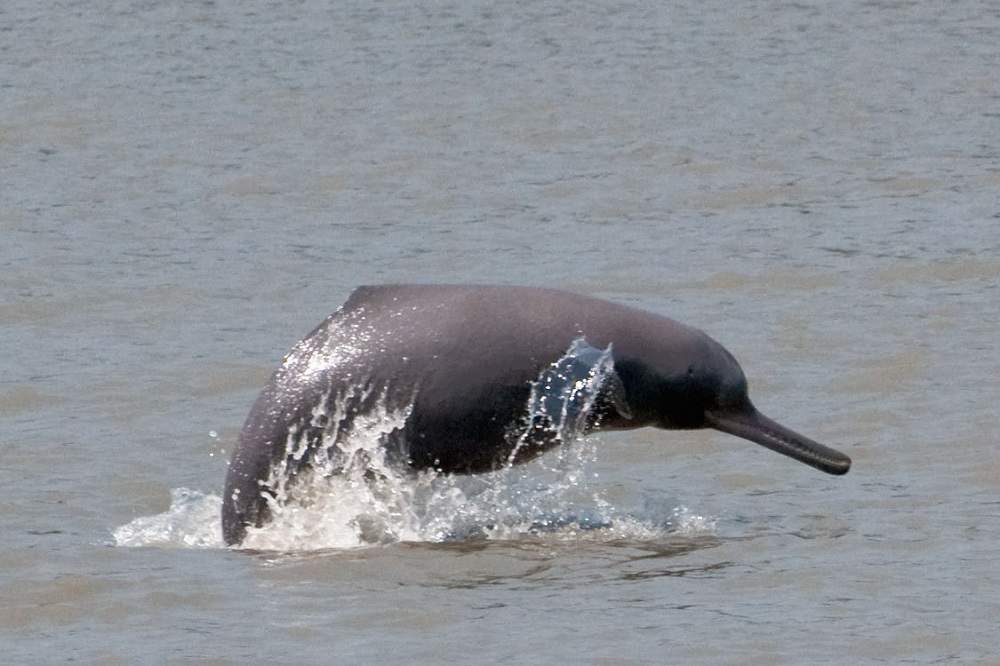The Ganges river dolphin, formally known as Platanista gangetica and colloquially known as the “Tiger of the Ganges“, was first observed in 1801. It is a species found mostly in large river systems like the Ganga-Brahmaputra. The Ganges river dolphin, adapted to freshwater conditions, lacks vision, but finds its way using ultrasonic noise.
These sounds are transmitted to the fish and prey, allowing them to develop mental representations and hunt effectively. Female and infant dolphins often move together and usually live alone or in small groups. Females, which are larger than males, give birth every two to three years.
As animals, Ganges river dolphins have to come to the surface every 30-120 seconds to breathe. Due to the unique sound they produce during respiration, they are known as ‘Sans‘ or ‘Susuk‘. It was designated as the national aquatic animal by the Government of India in 2009, and is also the state aquatic animal of Assam.

About the Author
Ankita is a German scholar and loves to write. Users can follow Ankita on Instagram 
Article Powered by TOPICFLIX
लावा और मैग्मा के बीच अंतर [Magma and Lava]
भूगोल में अक्सर ज्वालामुखियों का जिक्र आता है। ज्वालामुखी पृथ्वी की आंतरिक हलचलों का परिणाम…
Tinkathiya System – तिनकठिया प्रणाली
The Tinkathia system, often called the “tinkathia contract” or the “indenture system,” was an unfair…
क्या मुझे आई.ए.एस (IAS) की कोचिंग के लिए दिल्ली जाना चाहिए ?
आई.ए.एस (IAS) की कोचिंग के लिए दिल्ली जाना एक बैहतर विकल्प हो सकता है। दिल्ली…
ज़ेनोट्रांसप्लांटेशन (Xenotransplantation) [UPSC GK]
ज़ेनोट्रांसप्लांटेशन (Xenotransplantation) एक ऐसी प्रक्रिया है जिसमें मानव शरीर में किसी अन्य प्राणी (जो की…
Jai Narayan Vyas [जय नारायण व्यास]
Jai Narayan Vyas was an Indian freedom fighter, politician, and educationist who played a significant…
भारत ने 5 नए रामसर स्थल (India’s New Ramsar Sites)
केंद्रीय पर्यावरण मंत्रालय द्वारा अंतर सरकारी संधि, रामसर संधि, के तहत पांच और भारतीय स्थलों…




![ज़ेनोट्रांसप्लांटेशन (Xenotransplantation) [UPSC GK]](https://bugnews.in/wp-content/uploads/2022/03/xeno-1024x576.jpg)

